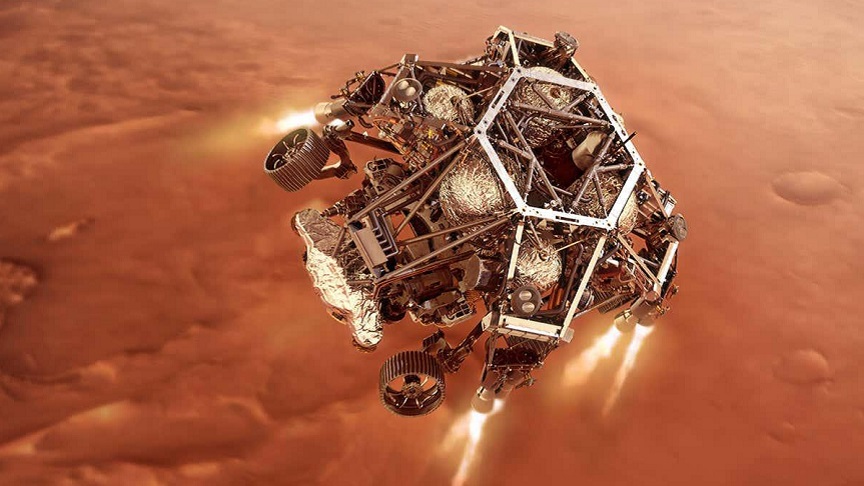After six months of careening through space, three sets of robots finally have Mars in their sights.
The missions — from NASA, China, and the United Arab Emirates — are set to reach the red planet this month, either falling into orbit around Mars or landing on its dusty red surface. Once there, they aim to search for signs of alien life, scan for underground reservoirs of water, and map the planet’s changing seasons.
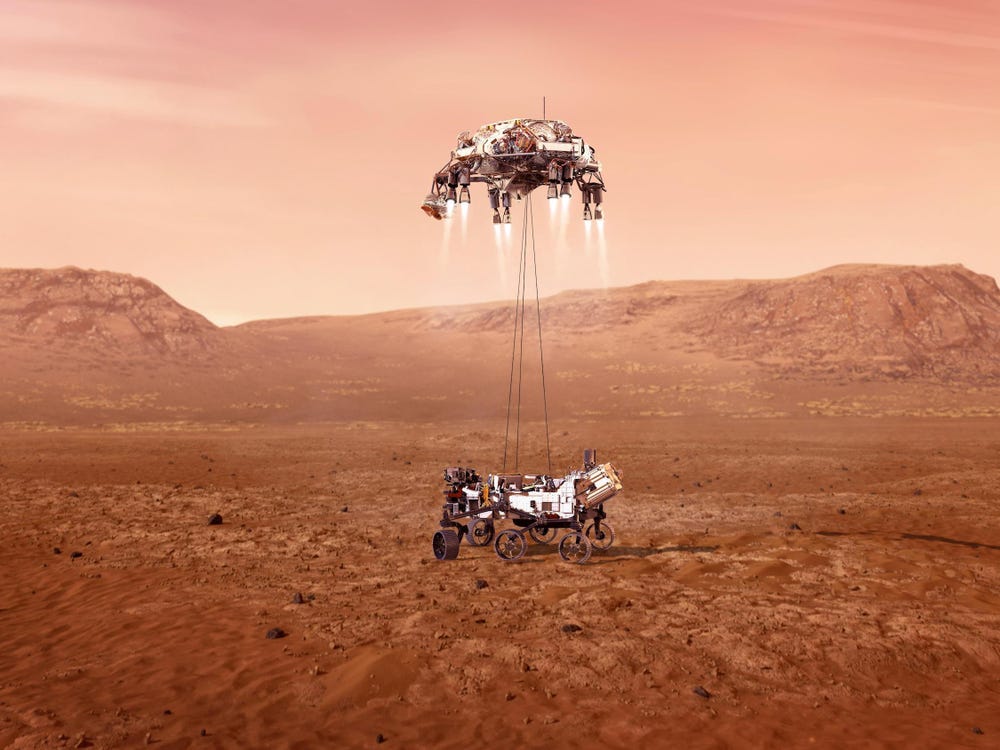
The three space agencies’ missions all launched in July 2020. Their timelines align because they are taking advantage of the same short window of time when Mars passes close to Earth in the planets’ orbits around the sun. That significantly reduces the travel time and cost of anything launched toward Mars.
As a result, Mars is about to welcome two rovers, two orbiters, and one helicopter.
Here’s what each of the robots is designed to do once it reaches the red planet.
NASA’s Perseverance rover will hunt for alien life and deploy a helicopter
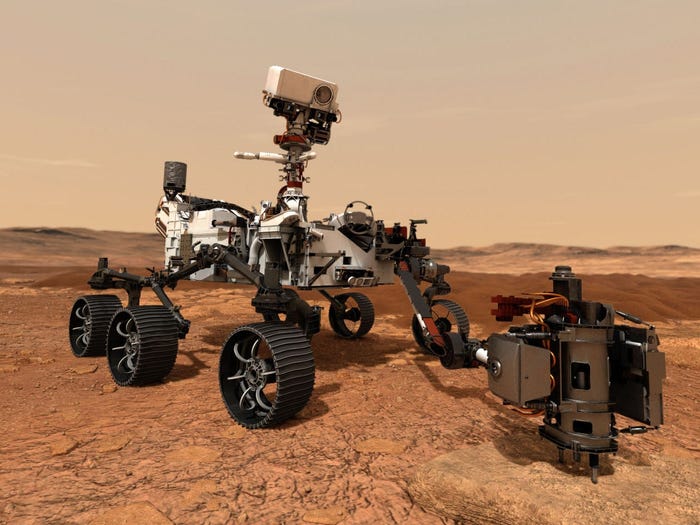
NASA built its newest Mars rover, Perseverance, to scan and drill Martian soil for signs of alien life. The nuclear-powered robot is programmed to stash those soil samples away so that a future mission can bring them back to Earth.
“This is the first time in history when NASA has dedicated a mission to what we call astrobiology: the search for life — either maybe now, or ancient life — on another world,” Jim Bridenstine, who served as the NASA Administrator during the Trump administration, said ahead of the rover’s launch.
If all goes well, NASA’s spacecraft will plow through the Martian atmosphere on February 18, deploy a parachute to slow its fall, then deposit the rover in Mars’ Jezero crater — an ancient lakebed that could harbor signs of past microbial life.
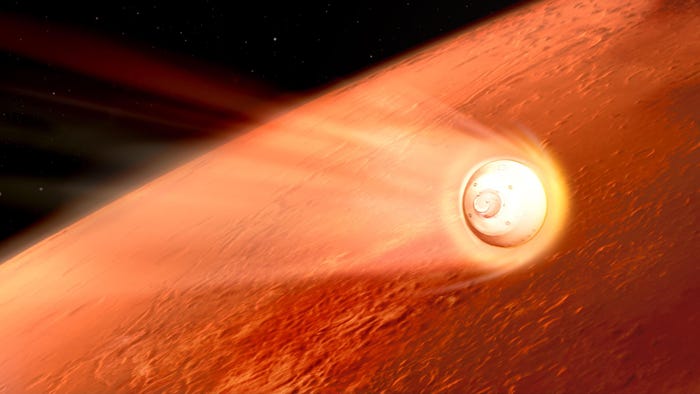
After a few months of checking and calibrating its scientific instruments, Perseverance is set to release the first interplanetary drone from its belly: a helicopter called Ingenuity.
The 4-pound drone is programmed to carry out a series of test flights, first hovering about 10 feet in the air, then building up to more difficult demonstrations. Ultimately, it could cruise over distances of nearly 980 feet (300 meters) across the Jezero Crater.
Ingenuity is just a technological demonstration, but it could kick off a new approach to exploring other planets.
“In the future, it could transform how we do planetary science on these other worlds, and eventually be a scout so that we can figure out where exactly do we need to send our robots,” Bridenstine said.
Perseverance also carries a device that converts carbon dioxide into oxygen. By testing its abilities on Mars, scientists can learn whether this technology could make oxygen for future Mars astronauts to breathe or turn into rocket fuel.
China is sending an orbiter, lander, and rover

If successful, China’s Tianwen-1 will be the first Mars mission to send a spacecraft into orbit, drop a landing platform, and deploy a rover all in one expedition.
It’s ambitious for the country’s first interplanetary mission. China attempted to send a simple orbiter to Mars in 2011, but the Russian spacecraft that was meant to carry it there stalled in Earth’s orbit and never left.
This time, China launched with its own space vehicle. A NASA camera that watches for asteroids captured the spacecraft speeding away in July.
Chinese state media reports that the spacecraft is set to fall into Martian orbit on February 10, according to Space.com.
After the orbiter spends a couple months surveying the landing site, it should drop the lander and rover to Utopia Planitia, a vast field of volcanic rock. Then the lander is set to deploy a ramp for the rover to roll off its platform and onto the Martian ground. The China National Space Administration (CNSA) says the landing will happen in May.
The rover is equipped with a radar system that can detect underground pockets of water. It aims to sniff out ancient reservoirs that could harbor life. It will also help China prepare for a mission to return its own sample from Mars to Earth.
The UAE’s Hope orbiter aims to map a year of Martian seasons
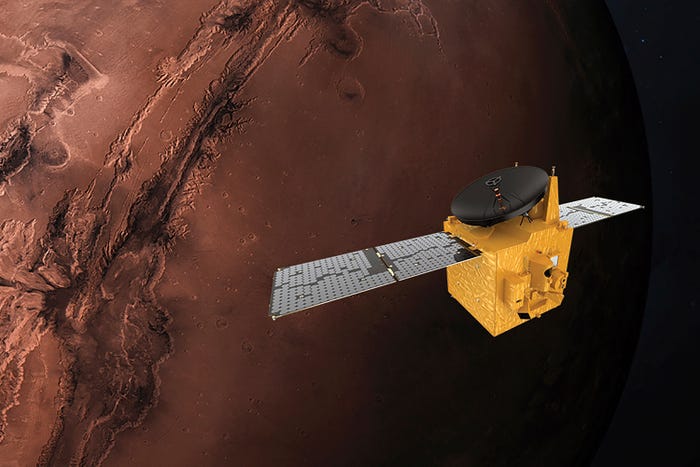
The UAE’s orbiter — called “Al-Amal,” or “Hope” — is the Arab world’s first mission to Mars. It aims to chart a global map of the planet’s climate across one Martian year (about two Earth years). It would be humanity’s first such picture of Mars’ atmosphere.
Want to witness the United Arab Emirates' Mars orbit insertion maneuver? Mark your calendar for Feb. 9. via https://t.co/twE0uTNBv1 https://t.co/GjBp1djpR4
— William Murphy (@futuredude) February 6, 2021
The SUV-sized spacecraft is set to arrive at the red planet on February 9, then fall into an oval-shaped orbit that allows it to survey most of the planet every 55 hours in infrared, ultraviolet, and visible light. While it orbits, the satellite will study the Martian atmosphere by monitoring how it interacts with solar wind and tracking the loss of hydrogen and oxygen.
“We’ll be able to cover all of Mars, through all times of day, through an entire Martian year,” Sarah Al Amiri, the mission’s science lead, told Nature before the orbiter launched.
This data could help scientists better understand Mars’ changing seasons and how it lost the thick atmosphere of its youth 4 billion years ago.
Source: businessinsider.com
Napomena o autorskim pravima: Dozvoljeno preuzimanje sadržaja isključivo uz navođenje linka prema stranici našeg portala sa koje je sadržaj preuzet. Stavovi izraženi u ovom tekstu autorovi su i ne odražavaju nužno uredničku politiku The Balkantimes Press.
Copyright Notice: It is allowed to download the content only by providing a link to the page of our portal from which the content was downloaded. The views expressed in this text are those of the authors and do not necessarily reflect the editorial policies of The Balkantimes Press.

